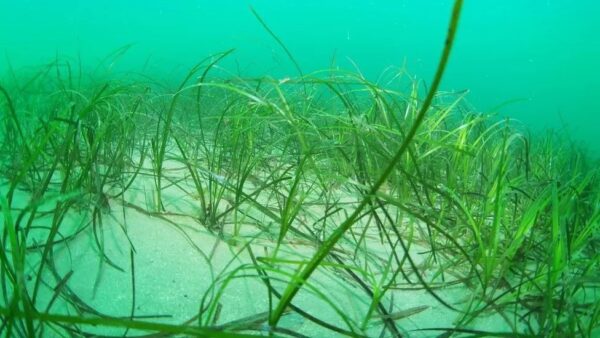A report published by Cornwall Wildlife Trust and Natural England has revealed that St Austell Bay supports one of the largest known seagrass beds in the UK.
The findings come from the St Austell Bay Blue Carbon Mapping Project, part of the ambitious G7 Legacy Project for Nature Recovery announced by the Prime Minister at the G7 Summit held in Cornwall in 2021.
Photo: Matt Slater/Cornwall Wildlife Trust
The St Austell Bay findings are the result of acoustic surveys carried out in partnership with the Cornwall Inshore Fisheries and Conservation Authority (IFCA). Boats used echosounder techniques to identify ‘blue carbon’ habitats – areas of the sea that act as highly effective carbon stores. The surveys focused on the historically under-recorded habitats of seagrass, which can flower and photosynthesise just like meadows in shallow seas, and beds of the delicate and brittle pink, coral-like algae known as maerl.
Cornwall Wildlife Trust Marine Conservation Officer, Abby Crosby, says: “To better understand the health of our coastal habitats and their potential for both marine recovery and blue carbon storage, it is essential to find out what is there first. The discovery of extensive surviving seagrass beds in St Austell Bay is a very exciting development.
Seagrass meadows are thought to have surrounded much of the UK in pre-industrial times when our seas were far richer in marine life, so the discovery of this significant bed today is a cause for celebration.”
Abby continues: “We look forward to collaborating with a wide range of people, from local residents to marine business and government organisations, to ensure we protect these special marine habitats which will benefit all marine life and our coastal communities into the future.”
The press release from the Cornwall Wildlife Trust can be read here and there is further coverage in the BBC, Guardian and CornwallLive.
The full report from Natural England and Cornwall Wildlife Trust can be read here.

No Comment